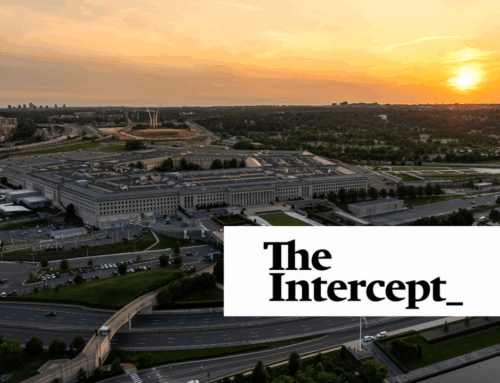The National Defense Authorization Act (NDAA) is the largest policy bill directing the nation’s annual spending, accounting for some $650 billion dollars—more than half our annual discretionary budget. In addition to providing money for the Defense Department, nuclear weapons agencies and overseas wars, it also sets guidance on ranging from detainees to contracting policy. Few outside the Beltway pay attention to its annual passage, but this year the bill has attracted a lot of attention because of the extraordinary amount of political baggage attached to it.
The FY13 version of the bill passed by the House of Representatives last week made news for breaking the budget promises that Congress made to taxpayers just last year. At $642 billion, the bill is $4 billion above the amount requested by the White House in February and $8 billion above the limit set by the 2011 Budget Control Act (BCA). It also contains billions of dollars for projects that the Pentagon doesn’t want—like an East Coast missile-defense silo—or that House appropriators didn’t even include in their version of the FY13 spending bills, such as an over-budget nuclear research facility at Los Alamos national laboratory in New Mexico. An especially absurd amendment by Rep. Turner (R-OH) would transfer management of the Los Alamos facility from the National Nuclear Security Administration to the U.S. Army Corps of Engineers, an agency with a similar –if not worse—track record of contract mismanagement. The initiative would force the nuke facility to compete for dollars with other DOD projects, a problem criticized in this Senate letter.
Why would the House pass such an egregious budget-buster under the specter of trillion-dollar deficits and a legal mandate to cut billions in federal spending (resulting, by the way, from Congresses’ own failure to do it themselves)? Answer: Politics, which is capitalized honor of this election year. One week prior to the NDAA's passage, the House adopted a bill to replace the defense portion of the spending cuts required under the Budget Control Act with deeper cuts to domestic and mandatory spending. The move was clearly engineered to give lawmakers wiggle room to squirm out of the commitment they made to taxpayers when they promised to divide the BCA’s $1.2 trillion in “doomsday” spending cuts equally between defense and non-defense.
The House Rules Committee followed this irresponsible act by preventing several NDAA amendments to cut wasteful spending from being debated on the floor. The ability to decide which amendments get a full debate lies with the powerful committee, and in keeping with tradition, the majority party made sure that amendments stripping out majority-backed initiatives—such as the East Coast missile defense site—never made it out of the gate. On the up side, an amendment by Rep. Jeff Flake exposing the porky process known as lettermarking was approved (see our letter to House lawmakers for more on amendments).
The House also rolled back several cost-cutting provisions the Defense Department offered in an effort to cut nearly $500 billion from its budget over the next decade. These include retiring unneeded aircraft, Navy cruisers and ballistic missile submarines; initiating another BRAC round; ending the Global Hawk drone program; and introducing changes to the TRICARE military health system that would save billions. The White House released a Statement of Administration Policy on May 15 threatening to veto the bill because the provisions would “impede the ability of the Administration to execute the new defense strategy and to properly direct scarce resources.”
Meanwhile, the Senate Armed Services Committee prepared to mark up its version of the NDAA behind closed doors. TCS joined a long list of open-government advocates in asking the committee to discourage lobbying by special interests and allowing citizen input by conducting markups in the public eye. The committee refused, instead releasing a 33-page press release on May 24 detailing their decisions. The SASC version of the NDAA provides $631 billion, adding a half billion to DOD’s budget but cutting $430 million from nuclear weapons funding and $300 million of that for overseas conflicts. The bill is a shade saner than the House’s, lowering caps on contractor paychecks and keeping funding for missile defense and nuclear weapons basically in line with the request, but still blocks TRICARE reforms and additional BRAC rounds. Details won’t be available until the full bill is posted on June 1.
With a backlog of bills waiting for the presidential election to pass before moving forward, the two chambers might not hammer out the differences between their versions of the NDAA until winter. That’s probably a good thing, seeing as this piece of legislation has become a magnet for election-year nonsense.










